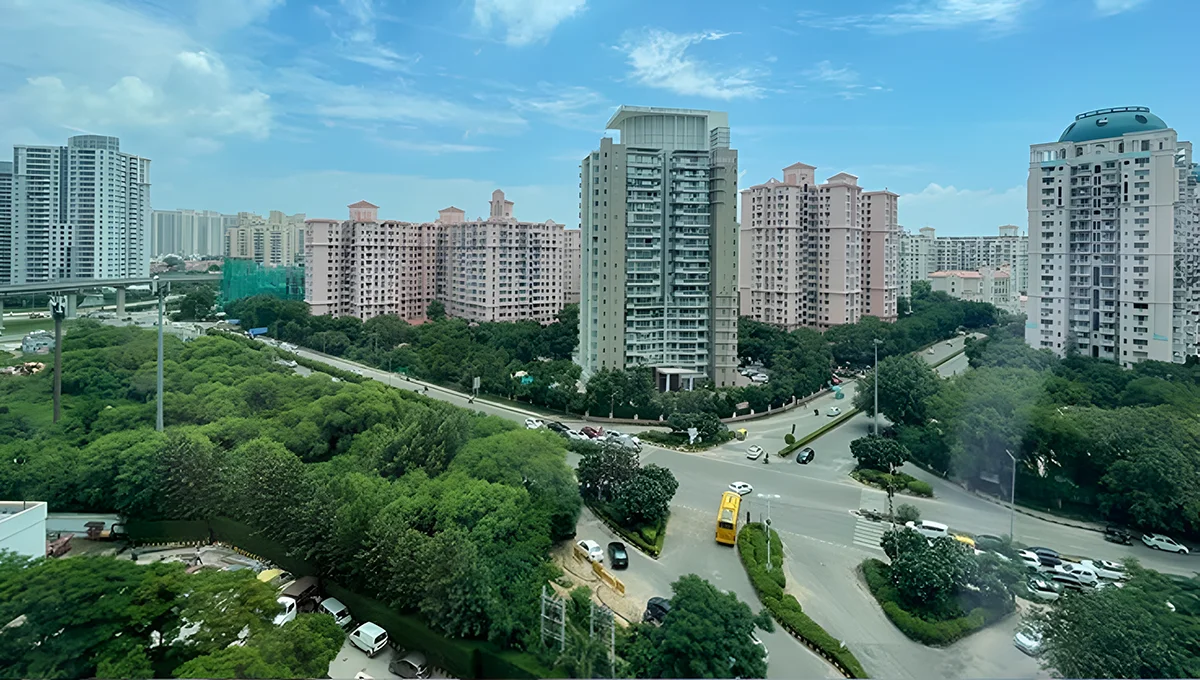Recent reports show that the demand for luxury properties has had a significant impact on overall property values. This makes them more expensive than ever.
Housing prices in India’s top seven cities, including New Delhi and Mumbai, rose from the previous year, reaching Rs 12.3 million ($145,707) in April-September 2024, according to a report by real estate consultancy ANAROCK.
This increase in prices occurs despite a slight decline in overall sales. Interestingly, ANAROCK report shows that the total number of properties sold in these cities decreased by 3%, the total sales price increased by 18%.
This clearly shows that there continues to be a demand for high-end luxury properties in the major cities of the country.
Growing Demand and Developer Response
Developers across the country are racing to meet this growing demand for luxury properties. DLF Ltd, India’s largest real estate developer, reported that its new sales bookings more than tripled to Rs 64 billion in the first half of the financial year.
The company expects a total sale of around Rs 170 billion by the FY end of March 2025. This trend is also further strengthened by strong investments in real estate.
According to an integrated report from CBRE South Asia Pvt. and the Indian Chamber of Commerce, this expectation exceeds $10 billion for the next time, first in 2024. This growth has largely been driven by increased investment in office buildings and complex pipelines to acquire residential lots.
Regional Insights: NCR, Bangalore, Hyderabad See Price Surges
The report also highlights regional differences in inflation. Delhi NCR witnessed the biggest increase in property prices, with a phenomenal growth of 56% over the past year, followed by Bangalore and Hyderabad, where property prices went up 44% and 37%.
Interestingly, while property sales were strong in cities like Mumbai and Pune, Delhi NCR led the way in rising prices. This reflects the growing interest in luxury properties. It is estimated that by 2025, all expats will make up about one-fifth of homes for sale, according to a report by Bengaluru-based NoBroker.com.
Comparing Property Prices: Delhi, Mumbai, Bangalore vs Dubai
How do these price hikes compare with other major cities globally? A close comparison between cities like Dubai and Indian cities like Delhi, Mumbai, and Bangalore reveals interesting facts. Price-to-income ratios, mortgage affordability, and rental yields point to massive variations.
For example, the price-to-income ratio to buy a property in Delhi is 9.85. This is higher than in Dubai, which has a value of 7.16. It indicates that you have to pay more to buy property in Delhi than in Dubai.
In Mumbai, the price-to-income ratio moves further up at 29.94, making the city highly priced for homebuyers. Bangalore is relatively better, but still, at 8.06, it is higher than in the city of Dubai.
In terms of affordability, rent paid as a percentage of income also highlights the difference. Rent payment in Delhi is 105.93% of the income, while in Dubai, it is 55.38%, indicating a huge disparity in affordability. Mumbai’s figure of 321.31% is more alarming, indicative of the huge financial burden faced by property buyers in the Indian financial center.
Rental Yields: India Lags Behind
Another area where Indian cities lag behind Dubai is rental yield. Gross rental yield measures the return on property investments. Here, Dubai offers much better prospects compared to Indian cities.
In Dubai, the gross rental yield in city centers is 7.96%, whereas in Delhi, it’s just 3.21%. Bangalore offers slightly better yields among Indian cities at 3.54%, but it’s still significantly below Dubai’s returns.
This gap in rental yields, combined with rising property prices, suggests that investors seeking rental income might seek opportunities elsewhere, particularly outside India, such as in markets like Dubai.
However, luxury property demand in India remains largely unaffected by the concept of rental returns, as it is driven more so by capital appreciation and brand value.
Verdicts
The real estate landscape in India is shifting rapidly, especially in the country’s biggest cities. Having a home has always been one of the biggest ambitions for many Indians. Still, now, it’s becoming more difficult to do due to price increases.
Whether it’s the plan to buy a home in New Delhi, Mumbai, or Bengaluru, the current market conditions make it evident that affordability is a growing problem.
Though it may still be time for people looking to invest in real estate, prices are rising and investments are coming in, and luxury property demand doesn’t show a stop sign anywhere in sight. However, the buyers need to weigh their finances very carefully, considering the rising interest rates and mortgage burdens in Delhi and Mumbai.
For the NRI, this might be the window of opportunity to invest back home, especially in luxury projects where the demand is still at a high level. For the average homebuyer in India, however, owning a home is now becoming increasingly out of reach.
As the market continues to evolve, it will be important to keep an eye on what’s driving these changes, like luxury demand, NRI interest, and investments. This will guide purchasing decisions, selling decisions, or, for that matter, even renting a place to call home.





_(2)_638647637563832478_820465_.webp)